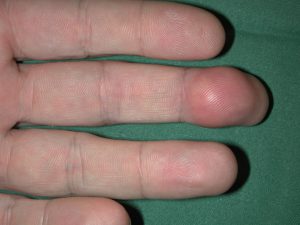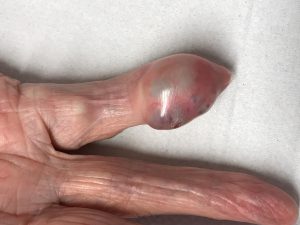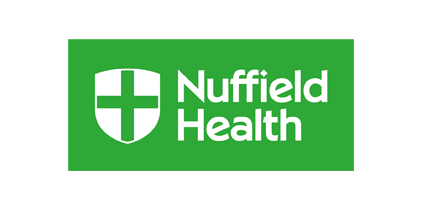Tumour – Lump
What is it?
A tumour is a medical term to mean growth of an abnormal structure (tissue) in the body. This tissue or structure can be solid or fluid filled and does not necessarily mean that it is malignant or cancerous.
Lumps in the hand and wrist are common. There are many different causes and overwhelmingly they are benign or non-malignant.
The commonest growth or lump in the hand and wrist is a ganglion. Information about wrist ganglions can be read here.

Who gets it and what causes it?
Anyone can develop a lump in their hand or wrist. Common types of lumps in the hand are ganglion (pearl ganglion, mucous cyst and wrist ganglion), giant cell tumour, lipoma (benign fatty lump), neuroma, granuloma, inclusion cyst and hemangioma. Carpal boss is a bony hard lump on the back of the hand.
Other conditions in the hand can initially present as a lump. Both arthritis (in either the fingers, hand and wrist) and early Dupuytrens disease can present with a lump.
What are the signs and symptoms?
Lumps are often painless. They may become uncomfortable when knocked or when getting in the way of hand function.
If a lump is excessively painful, large, growing fast or causing pressure on a nerve leading to numbness or tingling then more urgent management is preferable to rule out any possible worrying underlying cause.

What tests will I need?
The first step is to undergo a consultation, involving a medical history and clinical examination. Mr Naqui may organise further tests such as an x-ray, ultrasound or MRI scan. These should help to identify the exact location, size and nature of the lump.
What is the treatment?
Treatment will depend on the most likely diagnosis. Sometimes reassurance of a diagnosis is all that is needed. In some lumps it may be possible to drain the fluid by syringe. Lumps can be removed if causing symptoms or are unsightly. If there is uncertainty of the cause of the lump despite investigations it can be removed to gain laboratory confirmation.
What does the surgical treatment involve?
Surgery may be performed under local, regional or general anaesthetic depending on the location of the lump. It is a day case procedure meaning that you will be able to go home the same day.
Mr Naqui uses key-hole or arthroscopic surgery for some lumps which arise from a joint. In other cases a small incision will be made over the lump for open removal. If there is any doubt, the lump is sent for laboratory analysis. Mr Naqui will discuss with you the options for removal including the appearance of any scar.
What happens after the surgery?
Taking simple painkillers such as paracetamol regularly for the first 2 days after the operation will help to relieve any post-operative pain.
The hand will be placed in a dressing following the surgery. Specific exercises are started early on with the hand therapist.
Stitches, if used, are removed at around 10 days after surgery.
When I can return to normal activity?
Driving can safely be resumed at around 2 weeks. Return to work is dependent on the nature of your work but usually expected within 2 weeks if it is non-manual work. Mr. Naqui will discuss with you regarding return to sports depending upon your particular sport.
What are the complications of surgery?
The main potential complications that will be discussed with your prior to gaining consent for surgery include pain, swelling, infection, stiffness, scarring, numbness and recurrence of the lump.
Pain and swelling are common following surgery, these should settle after a few days with simple painkillers. Infection is rare. Stiffness at the joint should resolve if you follow the exercise programme as advised by Mr Naqui and the hand therapist following surgery. Injury to nerves around the wound may occur during surgery and lead to a feeling of numbness. In a proportion of patients the lump can come back.
The world literature quotes recurrence of lumps following surgery at anywhere between 10 and 30%. If this were to happen then there are further surgical options, which you can discuss with Mr Naqui.





